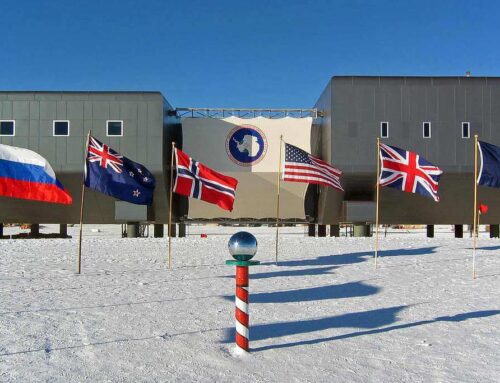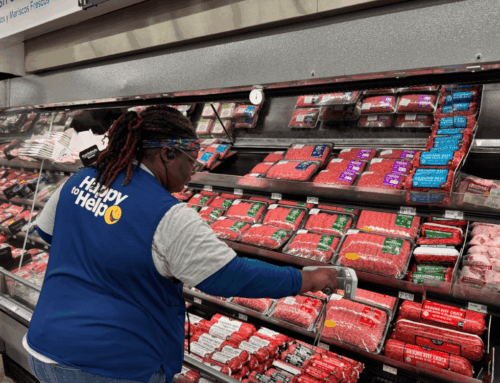Eating the Earth: The Environmental Impact of Farming
October 24, 2025
Agriculture may seem like humanity’s most wholesome endeavor—sun, soil, and sustenance—but beneath its pastoral image lies one of the planet’s most urgent climate challenges. “Agriculture is really our biggest environmental problem,” said journalist and author Michael Grunwald, speaking at a recent Climate Week panel hosted by Amy Todd Middleton. “It uses 70% of our fresh water, it’s the biggest source of water pollution, and it’s the leading cause of deforestation. We are literally eating the Earth.”
Grunwald’s recent book, We Are Eating the Earth, argues that our global food system—responsible for roughly a third of all greenhouse-gas emissions—is both indispensable and destructive. Far from being a niche sustainability issue, agriculture has become the central environmental battleground of the 21st century.
His co-panelist, Britt Groosman, Vice President of Climate and Nature at the Environmental Defense Fund (EDF), agreed on the scale of the problem but emphasized a crucial moral dimension. “It’s almost morally repugnant,” she said. “Seventy percent of the world’s water is used to grow food—and we throw half of it out.”
Together, Grunwald and Groosman explored what it means to re-engineer agriculture for a climate-smart future—one that can feed a growing population without consuming the planet that feeds us.
The Land Problem No One Talks About
When most people think of farms, they imagine something virtuous and natural—a symbiosis between people and the Earth. But Grunwald argues that this nostalgic image obscures the true scale of the crisis. Only 1% of the planet’s land area is covered by cities and suburbs, he said, while farms and pastures occupy 40%. “Our natural planet is becoming an agricultural planet,” he warned. “We’re losing a soccer field of tropical forest every six seconds to agriculture.”
Deforestation is not just a biodiversity issue—it’s a climate double-whammy. When trees are cleared for farmland, stored carbon is released into the atmosphere, while the Earth’s capacity to absorb future emissions is also diminished. “It’s like trying to clean your house while smashing the vacuum cleaner to bits in the living room,” Grunwald quipped.
Groosman echoed the urgency of stopping deforestation and peatland conversion, particularly in tropical regions. “We need to continue being more productive on the land we’ve already converted,” she said. “And we need to ensure the food we produce is not wasted. We can grow more food on the same amount of land—and waste less of what we already grow.”
For both speakers, the public’s biggest misconception is that small-scale, organic, or grass-fed farming is automatically better for the environment. “If you’re just looking at climate impacts, your grass-fed beef is actually worse than other beef,” Groosman said. “Organic food often has a higher climate footprint because it uses more land. There are other reasons to support it—animal welfare, reduced pesticide use—but not climate.”
Grunwald took the argument further. “People have read too much Michael Pollan,” he said with a grin. “They think the tragedy was when small, bucolic farms became industrial monocultures. But the real environmental tragedy was when nature became those small farms in the first place—that’s when we lost biodiversity and carbon.”
Industrial farming, for all its sins, is brutally efficient. “Factories are good at making stuff,” Grunwald noted. “And agriculture’s big job over the next 30 years is to produce more food than it has produced in the last 12,000. If ‘regenerative’ methods make less food per acre, they’ll need more acres—and that eats more of the Earth.”
The uncomfortable truth, he said, is that agriculture’s environmental damage stems less from chemistry than from geometry. The more land it occupies, the less nature remains.
Doing More With Less
Both panelists agree that technology—not austerity—offers the most straightforward path forward. “The short answer to what needs to happen,” Grunwald said, “is that we need to eat food that uses less land and make food that uses less land.”
On the demand side, two simple levers stand out: eat less beef and waste less food. Beef alone uses ten times as much land and produces ten times the emissions as chicken or pork. “We use a land mass the size of China to grow garbage,” he said. “That’s dumb.”
On the supply side, Grunwald sees a wave of innovation just beginning to crest. “I’ve reported on dozens of promising solutions,” he said, citing gene-edited microbes that can capture nitrogen from the air, alternative fertilizers that reduce runoff, and even AI-assisted efforts to reinvent photosynthesis. At the University of Illinois, researchers are engineering crops that could boost yields by 50% over the next two decades. “Photosynthesis has done a pretty good job maintaining life on Earth for three billion years,” he said. “But it turns out to be really inefficient.”
He’s equally bullish on the future of meat alternatives. “People say fake meat was a fad that failed, but think about it—it was a technological miracle to make meat out of plants that tasted 90% as good and cost only 40% more. The next step is to make it taste just as good and cost less. The cow is a mature technology. This stuff will get better.”
Groosman pointed to another often-overlooked frontier: livestock efficiency. “If you look at a cow in the Netherlands or California, it produces milk six to ten times more efficiently than a cow in India,” she said. “If we help the Global South improve productivity—through better feed, vaccines, and breeding—we can dramatically cut emissions and land use without adding more animals.”
She also emphasized the need for massive R&D investment in climate-resilient crops. “We’re already seeing droughts from California to Spain,” she said. “Yet soy and corn are having record yields this year because of decades of investment in genetic diversity. We need that same kind of R&D for other crops—or we’ll see catastrophic losses.”
Grunwald illustrated how technology and pragmatism can coexist in unlikely places. During his reporting in Brazil, he found ranchers who were improving productivity tenfold through techniques like rotational grazing, cover cropping, and no-till farming. “They hadn’t read Michael Pollan,” he said dryly. “They weren’t environmentalists—they were just getting kick-ass yields.”
By intensifying production on already-degraded land, these ranchers were protecting the rainforest by default. “If you care about emissions, you have to care about cattle—because that’s where the emissions are,” Grunwald said. “Helping ranchers in Brazil go from one cow per ten acres to one per acre is one of the biggest levers we have for the climate.”
Groosman agreed that boosting yields can generate what she calls “triple wins”—for farmers, for income, and for the planet. “Higher yields, higher incomes, and lower emissions,” she said. “That’s the kind of alignment we need.”
Despite their shared conviction that meat production must shrink, neither advocate believes lecturing consumers will solve the problem. Groosman, a vegetarian, admits that changing human behavior is “incredibly hard.”
“Pythagoras was advocating vegetarianism 2,500 years ago,” she said. “We’re in 2025, and we’re still not there. People are actually eating more protein. So our focus is to make sure that when you walk into a supermarket, whatever’s available has the lowest environmental footprint possible.”
Grunwald was even blunter. “You find the level of hypocrisy you’re comfortable with,” he said. “I have solar panels and an electric car, but I fly too much. I cut out beef and lamb, but I still eat chicken and pork because they’re delicious. The world ate 450 million tons of meat last year. The people who say the answer is simple—‘just stop’—that’s not a solution. Perfect isn’t on the menu, but better is better than worse.”
For all their realism, both panelists ended on a hopeful note. “When I started writing about climate 20 years ago, there were no alternatives to fossil fuels,” Grunwald said. “There was no solar, no wind, no electric cars. Now we’re in the middle of a clean-energy revolution. The fact that we’ve made so little progress on food just means we haven’t started yet—but we will.”
Groosman sees a similar turning point. “Agriculture used to be the forgotten frontier of climate policy—too hard, too complicated,” she said. “Now it’s at the center of the conversation. There are so many food-related events here at Climate Week. With everyone’s heads together, we can find solutions that are triple wins for farmers and consumers alike.”
As the conversation closed, Middleton captured the mood in the room. “With both of you working on this issue,” she said, “I’m feeling optimistic, too.”
The optimism is warranted. The challenges are vast, but so is human ingenuity. Just as energy transformed in two decades, the next revolution—quietly sprouting in labs, test fields, and startup kitchens—may redefine what it means to feed the world. If agriculture once ate the Earth, perhaps technology can finally teach it to share.
Search
RECENT PRESS RELEASES
Related Post







